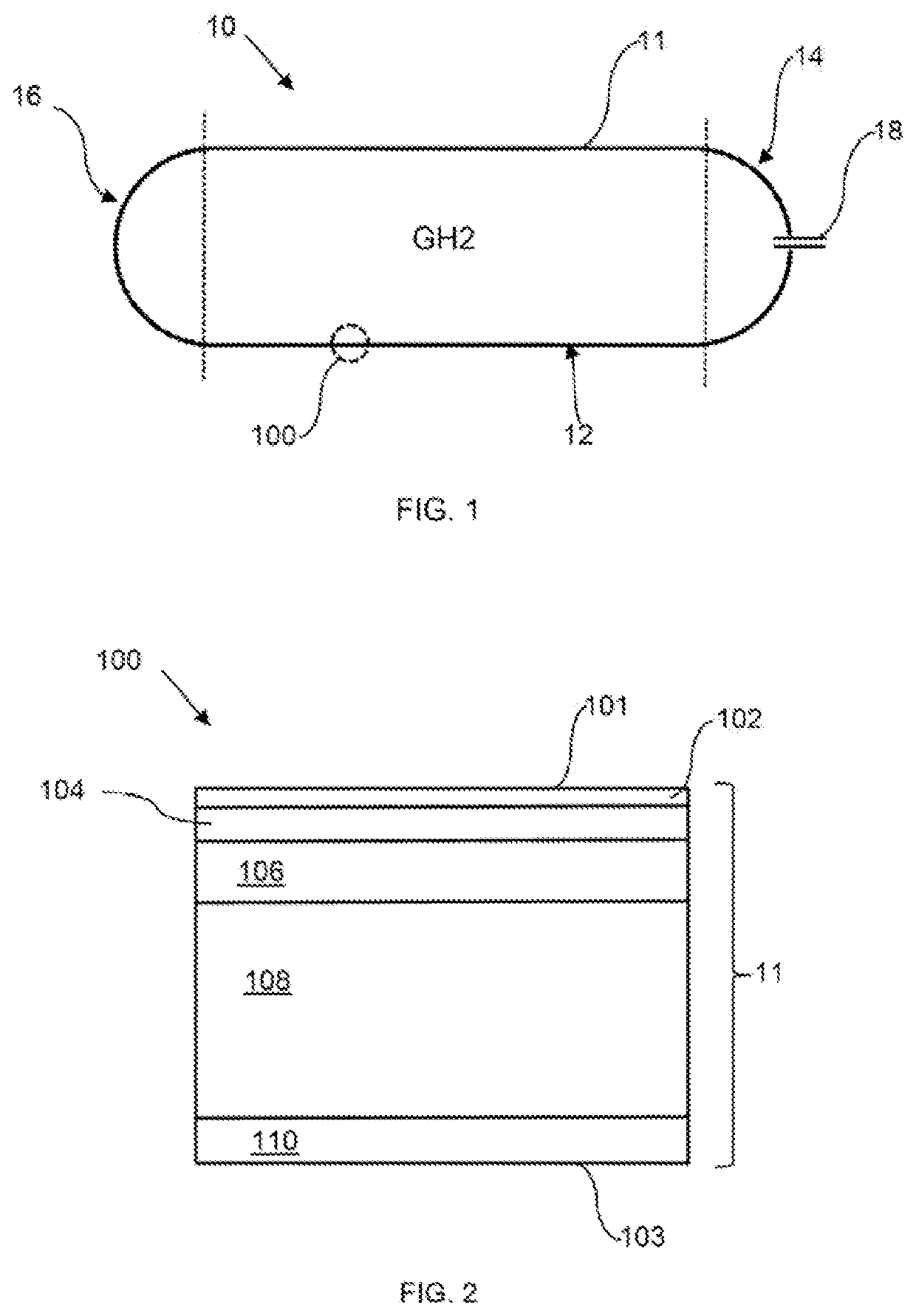Storage tank for gaseous hydrogen
a technology for gaseous hydrogen and storage tanks, which is applied in the direction of packaging foodstuffs, packaged goods types, synthetic resin layered products, etc., can solve the problems of affecting the and affecting the weight and gravimetric efficiency of the tank
- Summary
- Abstract
- Description
- Claims
- Application Information
AI Technical Summary
Benefits of technology
Problems solved by technology
Method used
Image
Examples
Embodiment Construction
[0014]FIG. 1 shows a tank 10 for storage of gaseous hydrogen at high pressure, for example 300 bar or more. The tank 10 comprises a cylindrical central section 12 and two hemispherical end portions 14, 16 formed by a boundary wall 11. A metal fitting 18 passing through the boundary wall 11 at hemispherical end portion 14 allows filling and emptying of the tank 10.
[0015]FIG. 2 shows the structure of a portion 100 of the boundary wall 11 of the tank 10 of FIG. 1, the structure of the boundary wall 11 being substantially the same at all positions around the wall 11. The boundary wall 11 has a laminate composite structure and has inner and outer surfaces 101, 103 respectively. The inner most layer 102 of the boundary wall is a resin-rich layer which provides a high-quality layer which remains substantially free of void and cracks under pressure and temperature cycling and which therefore provides a layer of low permeability for hydrogen stored within the tank 10. The resin-rich layer 10...
PUM
| Property | Measurement | Unit |
|---|---|---|
| Thickness | aaaaa | aaaaa |
| Electrical resistance | aaaaa | aaaaa |
| Impermeability | aaaaa | aaaaa |
Abstract
Description
Claims
Application Information
 Login to View More
Login to View More - R&D
- Intellectual Property
- Life Sciences
- Materials
- Tech Scout
- Unparalleled Data Quality
- Higher Quality Content
- 60% Fewer Hallucinations
Browse by: Latest US Patents, China's latest patents, Technical Efficacy Thesaurus, Application Domain, Technology Topic, Popular Technical Reports.
© 2025 PatSnap. All rights reserved.Legal|Privacy policy|Modern Slavery Act Transparency Statement|Sitemap|About US| Contact US: help@patsnap.com

